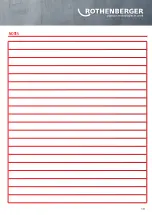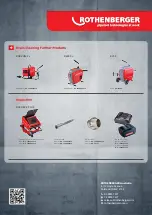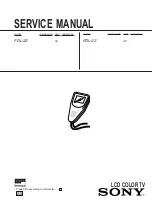
SAFE JETTING
PERSONAL PROTECTIVE EQUIPMENT
• Hazards cannot be prevented or otherwise suitably
controlled, e.g. by engineering or administration
controls, total enclosure or substitution.
• Complete protection is essential, e.g. in certain
occupational environments containing hazardous
levels that are uncertain
• Please note that the provision and use of certain
personal protective equipment certainly does not
reduce or replace the necessity of proper
Occupational Health and Safety prevention measures,
such as engineering or administrative controls, to be
exercised. Such preventative measures should always
be fully explored and implemented where applicable,
well before considering the utilization of
personal protective equipment. Where personal
protective equipment is deemed necessary, and thus,
issued, proper instruction and adequate training must
be provided regarding its correct use and
maintenance.
Where appropriate suitable head protection
complying with AS/NZS 1801 should be worn.
In compliance with AS/NZS 1337, eye protection,
adequate for both purpose and individual fit, should
be worn at all times when in the vicinity of any water
blasting operations. Where the liquid is likely to cause
eye damage, and thus, the individual operator is
vulnerable, full visor and goggles are recommended.
In compliance with AS/NZS 3765.1 (or AS/NZS 3765.2 if
working with hazardous chemicals) all persons should
wear suitable waterproof clothing, applicable to the
nature of work being done. Specifically, liquid or
chemical-resistant suits should be worn where there
is an assessed risk to health or of injury that can be
prevented by such equipment.
In compliance with AS/NZS 2161.2, AS/NZS 2161.3 or
AS/NZS 2161.5, appropriate hand protection should be
worn where there is an assessed risk of injury that can
be prevented by such equipment.
In compliance with AS/NZS 2210.2, appropriate
occupational footwear should be worn at all times.
Furthermore, a lower leg guard should be used by
water blasting operators where it has been assessed
that the risk of foot injury could be prevented by such
equipment. Please refer to AS/NZS 2210.2 for guidance
around the appropriate selection of footwear.
In compliance with AS/NZS 1270, appropriate hearing
protection should be worn at all times where the level
of noise exceeds the limits stipulated by regulatory
authorities.
12
Summary of Contents for ROBLAST JETTER
Page 1: ...ROTHENBERGER ROBLAST JETTER MANUAL ...
Page 18: ...SAFE JETTING 18 NOTES ...
Page 19: ...NOTES 19 ...






































